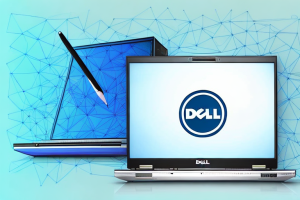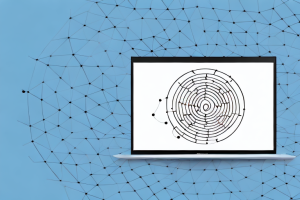How to upgrade the RAM on a Dell Precision 7510
9 min read
A laptop with a ram upgrade in progress
If you’re running a Dell Precision 7510, you may have noticed that your computer is beginning to slow down a bit. One potential cause of this lag could be your RAM. Fortunately, upgrading the RAM on a Dell Precision 7510 is a relatively simple process that anyone can do with the right tools and knowledge. In this article, we’re going to walk you through every step of the process, from understanding the basics of RAM to troubleshooting common issues that may arise after a RAM upgrade.
Why should you upgrade your Dell Precision 7510 RAM?
Before we dive into the nitty-gritty of upgrading your Dell Precision 7510’s RAM, it’s important to understand why you might want to do so in the first place. RAM (Random Access Memory) is a crucial component of any computer. It’s the part of your computer’s hardware that allows it to quickly access and manipulate information while you’re using it. If you’re running too many programs at once or trying to do intensive tasks like video editing or gaming, your computer’s RAM can quickly become overwhelmed, causing it to slow down or even crash. By upgrading your Dell Precision 7510’s RAM, you’ll be giving your computer the necessary boost to handle these tasks with ease, ensuring that it runs smoothly and efficiently.
Another reason to upgrade your Dell Precision 7510’s RAM is to future-proof your computer. As technology advances, software and applications become more demanding, requiring more resources to run smoothly. By upgrading your RAM now, you’ll be able to keep up with these advancements and ensure that your computer remains relevant and functional for years to come.
Finally, upgrading your Dell Precision 7510’s RAM can also save you money in the long run. If your computer is running slow or crashing frequently, you may be tempted to replace it with a newer model. However, by simply upgrading the RAM, you can give your computer a new lease on life and avoid the expense of purchasing a brand new machine.
Understanding the basics of RAM
RAM is typically measured in gigabytes (GB). The more RAM you have, the more programs you can run at once without overloading your computer’s memory. It’s important to note that not all RAM is created equal. Different computers require different types of RAM, and not all RAM is compatible with all machines. Before you start shopping for new RAM for your Dell Precision 7510, it’s important to identify the specific type of RAM that your computer requires.
Additionally, it’s important to consider the speed of the RAM when upgrading. RAM speed is measured in megahertz (MHz) and can affect the overall performance of your computer. Higher speed RAM can improve the speed at which your computer can access and process data. However, it’s important to note that the speed of your RAM is limited by the speed of your computer’s processor. Upgrading your RAM to a higher speed may not necessarily result in a significant improvement in performance if your processor is not able to keep up.
Checking your current RAM capacity
Before upgrading your computer’s RAM, it’s important to know how much RAM your Dell Precision 7510 currently has. You can check this by right-clicking on your computer icon and selecting “Properties.” This will bring up a window with information about your computer, including the amount of RAM it currently has installed.
It’s also important to note that the RAM capacity of your computer can affect its overall performance. If your computer is running slow or experiencing lag, it may be due to a lack of RAM. Upgrading your RAM can help improve your computer’s speed and performance.
When upgrading your RAM, it’s important to make sure that you purchase the correct type and amount of RAM for your computer. The Dell Precision 7510 requires DDR4 RAM and can support up to 64GB of RAM. It’s recommended to consult with a professional or refer to your computer’s manual before making any upgrades.
Identifying the compatible RAM for Dell Precision 7510
Now that you know the current capacity of your Dell Precision 7510’s RAM, it’s time to identify the specific type of RAM that’s compatible with your computer. RAM comes in different form factors, speeds, and voltages. You’ll need to do some research to find out which type of RAM is compatible with your computer. Some resources that can help you identify the compatible RAM include the Dell Precision 7510 user manual and online PC building websites such as PCPartPicker.com.
One important factor to consider when identifying compatible RAM for your Dell Precision 7510 is the maximum amount of RAM that your computer can support. This information can be found in the user manual or by checking the specifications of your computer online. It’s important to note that installing more RAM than your computer can support may cause system instability or even damage to your computer.
Another factor to consider is the speed of the RAM. While faster RAM can improve the performance of your computer, it’s important to ensure that the speed of the RAM is compatible with your computer’s motherboard. Again, this information can be found in the user manual or by checking the specifications of your computer online.
Gathering the necessary tools for upgrading RAM
Before you start upgrading your computer’s RAM, you’ll need to make sure that you have the necessary tools on hand. These tools include a screwdriver set, an anti-static wrist strap, and of course, the new RAM that you’ll be installing.
It’s important to note that not all RAM is compatible with all computers. Before purchasing new RAM, you should check your computer’s specifications to ensure that the RAM you’re buying is compatible. Additionally, it’s a good idea to research the type of RAM that your computer uses and the maximum amount of RAM that your computer can handle. This information can usually be found in your computer’s manual or by doing a quick online search.
Preparing the Dell Precision 7510 for RAM upgrade
Before you start physically opening up your computer to replace the RAM, it’s important to take a few preparatory steps to ensure that you don’t damage any of the components. Start by turning off your Dell Precision 7510 and unplugging it from the wall. Once the computer is completely powered down, you can start removing the battery and any other peripheral devices that might be attached to it.
Next, you should ground yourself to prevent any static electricity from damaging the internal components of your computer. You can do this by touching a metal object that is grounded, such as a doorknob or a metal table leg. It’s also a good idea to work on a clean, flat surface to prevent any small screws or components from getting lost.
Once you have taken these preparatory steps, you can begin opening up your Dell Precision 7510 to access the RAM. Be sure to consult the user manual or online resources for specific instructions on how to remove the RAM and install the new modules. With the right tools and a little bit of patience, you can upgrade your computer’s RAM and enjoy improved performance and speed.
Removing the old RAM from Dell Precision 7510
Now it’s time to start removing the old RAM from your Dell Precision 7510. Locate the memory slots on your computer (these are usually located on the underside of the device) and remove the screws that are holding them in place. Then gently remove the old RAM by sliding it out of the slot. Be sure to hold the RAM by its edges to avoid damaging it with static electricity.
Before removing the old RAM, it’s important to make sure that your computer is turned off and unplugged from any power source. This will prevent any electrical damage to your device or yourself. Additionally, it’s a good idea to ground yourself by touching a metal object before handling any computer components to discharge any static electricity.
Once you have removed the old RAM, you can replace it with new RAM modules. Make sure that the new RAM is compatible with your Dell Precision 7510 and that you install it correctly. Refer to your computer’s manual or manufacturer’s website for specific instructions on how to install new RAM.
Installing new RAM into Dell Precision 7510
Next, it’s time to install your new RAM into your Dell Precision 7510. Start by lining up the notch in the new RAM with the notch in the memory slot and gently pushing it in. You should hear it click into place. Repeat this process for any additional RAM modules that you’re installing.
Properly securing the new RAM in place
With your new RAM installed, it’s important to make sure that it’s properly secured in place. Start by replacing the screws that you removed earlier to hold the memory slots in place. Then replace the battery and any other peripheral devices that you removed earlier.
Turning on the Dell Precision 7510 after a RAM upgrade
You’re almost done! Now it’s time to turn your Dell Precision 7510 back on and make sure that your new RAM is recognized. Turn on your computer and wait for it to boot up. Once it’s fully loaded, go to your computer’s system properties and confirm that the new RAM is visible. If everything is working correctly, you should see the new capacity reflected in the system properties window.
How to confirm if your Dell Precision 7510’s RAM upgrade was successful?
If you want to be absolutely sure that your Dell Precision 7510’s RAM upgrade was successful, there are a few things you can do. Start by running some benchmarks to see if your computer is running faster than it was before. You can also try running more intensive programs to see if your computer can handle them with ease now.
Troubleshooting common issues after a RAM upgrade
If you run into issues after upgrading your Dell Precision 7510’s RAM, don’t panic! Some common issues include RAM modules not being recognized, computer crashes, and blue screens of death. Start by making sure that your RAM is properly installed and secured in place. If that doesn’t solve the issue, try rebooting your computer and running system diagnostics. If all else fails, consult the Dell Precision 7510 user manual or contact Dell customer support.
Frequently asked questions about upgrading a Dell Precision 7510’s RAM
Here are some frequently asked questions that you might have when upgrading your Dell Precision 7510’s RAM:
- Q: How much RAM can I upgrade my Dell Precision 7510 to?
- A: The specific amount of RAM you can upgrade your Dell Precision 7510 to will depend on the exact model you have. Refer to your computer’s user manual for more information.
- Q: Do I need to upgrade both RAM slots?
- A: No, you can upgrade just one RAM slot if you choose. However, adding more RAM to both slots will give your computer a bigger performance boost.
- Q: Do I need to buy RAM in pairs?
- A: No, you can add just one new RAM module if you want. However, if you’re planning on adding a second module, it’s best to make sure that they’re the same model for maximum compatibility.
- Q: Can I mix and match different types of RAM?
- A: It’s not recommended to mix and match different types of RAM, as this can cause compatibility issues and potentially damage your computer.
Conclusion and final thoughts on upgrading a Dell Precision 7510’s RAM
Upgrading the RAM on your Dell Precision 7510 is a relatively simple process that can give your computer a significant performance boost. By following the steps outlined in this article, you should be able to upgrade your RAM with ease and avoid any potential issues that may arise. If you find yourself stuck, consult your computer’s user manual or reach out to Dell customer support for assistance. With a little bit of effort, you’ll be enjoying a faster and more efficient computer in no time. Good luck!


